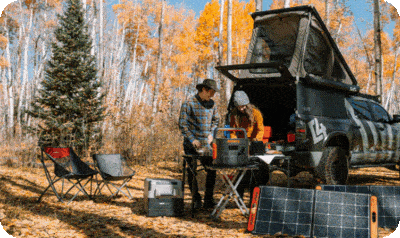GPS (Global Positioning System) has become an essential technology for many positioning and navigation applications. Surveyors and engineers rely mainly on centimetre or even millimetre-level accuracy when performing their jobs, which is achieved using Real Time Kinematic (RTK) positioning techniques.
RTK relies on an RTK base station and rover setup, yet many need to learn precisely what this entails and how it operates. This article aims to demystify GPS base/rover systems used for high-precision positioning by providing a plain English guide that clarifies them all.
The Role of the Base Station
The base station is one-half of the RTK positioning solution. It is composed of a high-quality dual-frequency GPS receiver, antenna, and data link.
The base station serves two essential functions:
Providing a Fixed Reference Point
The base station receiver occupies a surveyed location with precisely known 3D coordinates. Sitting on a known point provides a stable reference that the rover station can compare its position.
Broadcasting Real-Time Corrections
The base station measures errors in the GPS signals caused by atmospheric effects, satellite orbit errors, and other factors. It calculates corrections and broadcasts them to the rover via a data link (e.g., radio, cellular, etc.).
The rover can achieve much higher accuracy by receiving these real-time corrections from the known base station position.
What is the Rover?
Now let’s switch to the other half of the RTK system – the rover.
The rover consists of a similar dual-frequency GPS receiver and antenna to the base, but it is designed for mobility instead of permanence.
Mobile Data Collection
The Rover Receiver can be moved around any field location to collect position data. With base corrections connected, it can provide pinpoint coordinates down to centimetre accuracy relative to its base location.
Versatile Positioning
Rovers can be attached to vehicles, boats, aircraft, backpacks and more for GPS roving applications in remote or inaccessible places. Drones offer new opportunities for GPS roving.
Specialized Sensors
In addition to its GPS receiver, a rover may be equipped with specialized sensors for things like:
- Camera imaging
- Laser scanning
- Atmospheric monitoring
- Ground penetrating radar
By combining precise positioning with other data collection, rovers enable diverse geospatial applications.
Real-Time Kinematic Positioning
Now that we understand the base and rover individually, let’s look at how they work together to achieve RTK precision.
Correcting Errors in Real Time
The base station measures errors affecting the GPS signals. It sends correction data to the rover receiver via radio or cellular link, typically at rates of 1-20Hz.
Precise Relative Positioning
By applying these rapid corrections, the rover can identify its location within centimetres, both horizontally and vertically, of its known base location.
Networked Base Stations
Some RTK systems utilize multiple bases spread out over an area to increase accuracy over longer distances and minimize issues related to line-of-sight radio transmission. Network RTK provides excellent coverage while decreasing problems with line-of-sight transmission issues.
Post-Processing for Highest Accuracy
If the rover’s raw data is saved during operation, the highest positioning accuracy down to just a few millimetres can be achieved back in the office during post-processing. By post-processing the raw rover measurements against the base station data, any small gaps or interruptions in the real-time correction reception in the field can be effectively filled in and smoothed over.
This post-processing allows the RTK solution to be refined and optimized afterwards. Precise carrier phase post-processing can resolve integer ambiguities and overcome issues caused by factors like weak satellite geometry or atmospheric effects.
So while real-time corrections from the base provide centimetre accuracy in the field, post-mission post-processing can reliably refine the rover’s trajectory to 2-5 millimetres relative to the ground. This exceptional post-processed accuracy makes RTK systems extremely powerful and versatile for the most demanding surveying and mapping applications.
Conclusion
Survey and geospatial teams equipped with GPS base and rover setups have the tools to achieve centimetre-accurate positioning and navigation while collecting highly detailed spatial data.
RTK systems open up numerous possibilities for accurate field mapping, monitoring and measurement.
RTK technology may involve complex tools, but the foundational concept behind base and rover systems remains straightforward. Following this guide should help improve fundamental principles of GPS precision through base-rover strategies – leading to more precise positioning results. Accurate positioning begins with solid fundamentals.









